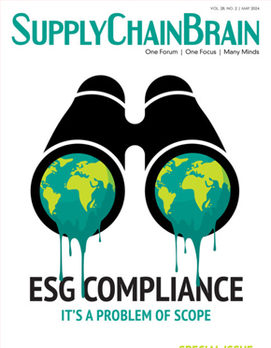
Until the beginning of the pandemic in 2020, just-in-time (JIT) inventory management strategy was considered to be among the most reliable business models for manufacturing everything from cell phones to satellites. JIT was used to minimize component inventories and increase efficiency throughout the production process. For active products, that meant required materials arrived when they were needed to start the next phase of production. Deliveries required either a pre-agreed schedule or a supplier who was willing to pre-stock a lot of inventory.
JIT and ad hoc ordering work well while parts are still in production and the supply chain is robust. But once the manufacturing process is disrupted, and supplies become limited or even non-existent, things change drastically. This was made clear by the recent worldwide component crisis, which highlighted what legacy equipment manufacturers already knew: that JIT strategy fails when the supply chain becomes unreliable and weak, as it did during the COVID-19 pandemic. Current supply chains are unable to meet demand forecasts, resulting in huge increases in overhead and stocking costs, disrupted deliveries, and reduced product quality.
Yet, in a more subtle way, unbeknown to corporations, the same flaw has been affecting their revenues and delivery schedules for years, when attempting to support older designs with long lifecycles and inconsistent or low demand. As embedded products age, they increasingly encounter sustainment issues such as obsoleted parts, erratic and diminished demand, and unbudgeted engineering investments. The pandemic showed that JIT wasn’t designed for sustainment, and that the resources needed to address these issues aren’t only substantial, but ultimately undermine business objectives by stifling new-product introductions (NPIs), reducing profit margins, and throttling operational efficiency.
This is true for both the original equipment manufacturer and its customers. In an effort to capture business, satisfy the needs of strategic accounts and bolster the top line, boards and application OEMs find themselves chasing after the parts and resources need to deliver product. Just because parts are still in demand doesn’t mean the infrastructure to support their production is still in place.
Although it’s widely believed that the key to sustainment lies in bill of materials health management and pre-stocking of difficult-to-source parts, this approach quickly falls short when the reality of supporting the work comes into focus. It stands in direct opposition to the JIT model and the everyday assumptions that guide business planning.
In actuality, resources allocated to manage these sustainment issues create management distractions, production bottlenecks and delays in NPI. And the bottlenecks around conflicting priorities build up quickly.
There are many reasons why OEMs would rather put up with the noise that sustainment creates, rather than divert time and resources from business objectives. Changing the way that things are done creates ripples that are felt throughout an organization. The possibility of disruption becomes as epic as the potential for value add.
The reality is that in order to meet the growing need of legacy products while maintaining business objectives, a new approach to obsolescence management is required. The answer lies in outsourcing support for these older designs to a supplier, and continuing with business as usual without distractions.
A legacy equipment manufacturer is the right outsourcing partner for an OEM. The LEM works with the OEM to identify and take over the support of older designs plagued by decreasing and sporadic demand, and address sourcing issues due to obsolete components.
It functions under a different business model of manufacturing sustainment, which activates when low demand for product impairs economies of scale, and logistics overhead makes the product unprofitable. In other words, when JIT breaks down.
While many OEMs try to sustain their own discontinued products, they struggle with competing and mutually exclusive business models. JIT considers mostly the top 20% of the product in a traditional portfolio, and relegates the bottom 20% to ad hoc strategies. At this point, focus on the product portfolio flips, and most resources are diverted to support the top line, without considering impacts to the bottom line.
By exchanging fruitless labor for royalties and licensing fees, OEMs can improve a low-performing product portfolio and realign internal resources to focus on development of new products. Partnering with a LEM improves customer satisfaction, while saving money by not scrapping old systems and equipment, and reducing capital expenditure.
Tania Scroggie is OEM relationship director with GDCA.



.jpg?height=100&t=1715228265&width=150)


